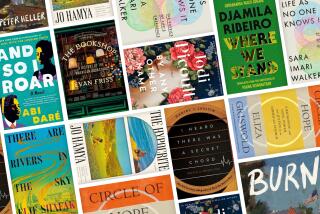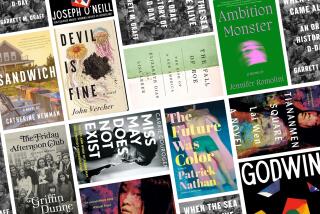Building a Spenser collection for the ages
Queen ELIZABETH I made him England’s poet laureate. But the complete works of Edmund Spenser -- whose epic poem, “The Faerie Queene,” so dazzled the monarch -- are hard to find these days.
Now, thanks to Oxford University Press, a coterie of Spenserian scholars and a $150,000 grant from the National Endowment for the Humanities, an updated collection of the English master’s prose and poetry is in the works.
Joseph F. Loewenstein, a Renaissance literature expert at Washington University in St. Louis, is leading a team of graduate and undergraduate students to compile, edit, annotate and digitize Spenser’s complete oeuvre, including “The Faerie Queene,” which vaulted him into the pantheon of English literature.
“Edmund Spenser is, along with William Shakespeare and John Milton, one of the three most influential writers of the English Renaissance,” notes Katherine Eggert, president of the International Spenser Society and a professor at the University of Colorado. “ ‘The Faerie Queene’ was on Shakespeare’s mind when he wrote ‘A Midsummer Night’s Dream’ and paved the way for ‘Paradise Lost.’ ”
But Spenser goes “largely unread today,” in part because of the “difficulty of his language, which -- like James Joyce’s later on -- not only bristles with erudition but also engages in brilliant wordplay, employing archaic words and inventing new ones.”
Consider this stanza from “The Shepheardes Calender”:
To kerke the narre from God more farre,
Has bene an old-sayd sawe;
And he that strives to touche a starre
Oft stombles at a strawe.
Loewenstein first pitched the Spenser project to Oxford in 1999, the 400th anniversary of Spenser’s death, along with colleagues Patrick Cheney at Pennsylvania State University and David Lee Miller at the University of South Carolina. Their proposal envisions it as the “standard edition for the century to come.” The first of three volumes of the print edition and a substantial portion of the Spenser Archive are expected to be ready by 2010.
Run softly, sweet Thames, until their work is done.
Kristina Lindgren
--
Selznick’s use of visuals: visionary
-
Brian SELZNICK designed his superb children’s book “The Invention of Hugo Cabret” using a simple strategy: Illustrations wouldn’t be in service to the prose but would share equally in the storytelling. Throughout the book, prose pages give way to image sequences that pick up the narrative. Our reviewer, Sonja Bolle, called the book “cinematic” in its approach to the life of an orphan living in a Paris train station.
Last week, Selznick received the 2008 Randolph Caldecott Medal for what Publishers Weekly calls a “thick, genre-busting book.” It is also significant to remember that, at a time when so many people say old-fashioned reading is being threatened by a culture increasingly dominated by the visual, a creator like Selznick has found a way of deploying words and images in a triumphant, vibrant way.
--
-- Nick Owchar
--
Literary review as health center
Six years ago, the Department of Medicine at New York University started the Bellevue Literary Review with the idea of showcasing work on health and healing, illness, mortality and death. Since then, the review has published such authors as Rick Moody, Abraham Verghese and Amy Hempel, all of whom are featured in “The Best of the Bellevue Literary Review” (Bellevue Literary Press), put together by editor in chief Danielle Ofri and the journal’s staff.
There’s a lot of fine, and unexpected, writing in this collection: Floyd Skloot’s poem “First Steps,” which describes his first walk without a cane in 15 years, or Rafael Campo’s vivid “Silence = Death.” But my favorite is Jan Bottiglieri’s “Having an MRI/Waiting for Laundry,” which, in the space of a single paragraph, manages to evoke the way time can collapse around us, bearing us back and forth between the present and the past.
“I am wondering,” Bottiglieri writes, “how a childhood that seemed almost miserable at times can be looked back upon with such an aching love for even the smallest detail. Because the noise here inside the MRI machine is so common, so familiar, that within seconds I am leaning against the wall near the back door of my mother’s house, circa 1975, listening to the green Maytag spin. . . . It is 1975, so I have never been in love or made love to, never almost died from cancer, never married, never carried and bore my son, never had this MRI. It is 1975, and I am just a girl waiting for laundry, trying to help her mother.”
-- David L. Ulin
More to Read
Sign up for our Book Club newsletter
Get the latest news, events and more from the Los Angeles Times Book Club, and help us get L.A. reading and talking.
You may occasionally receive promotional content from the Los Angeles Times.








